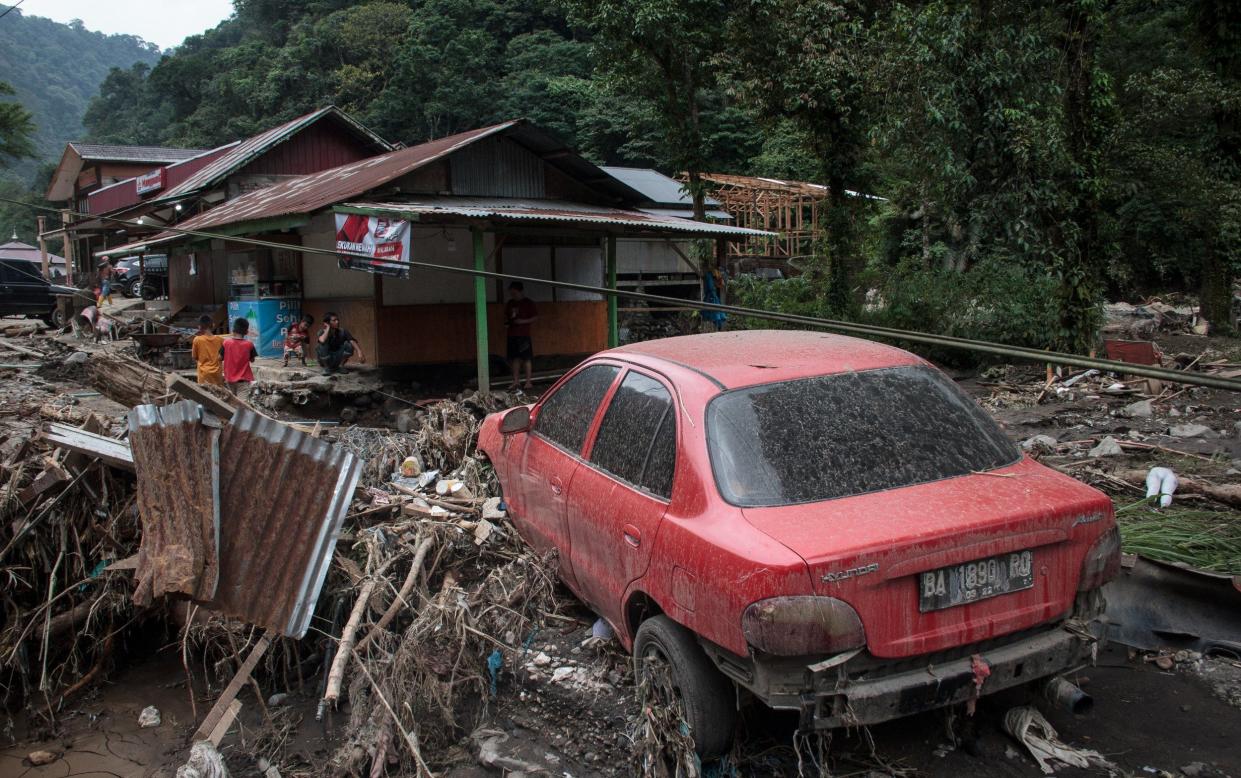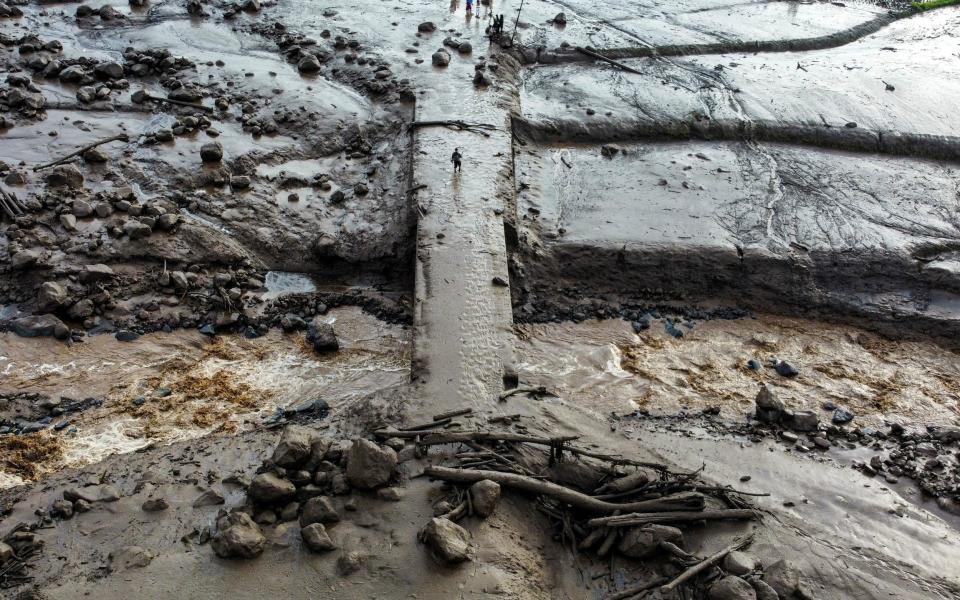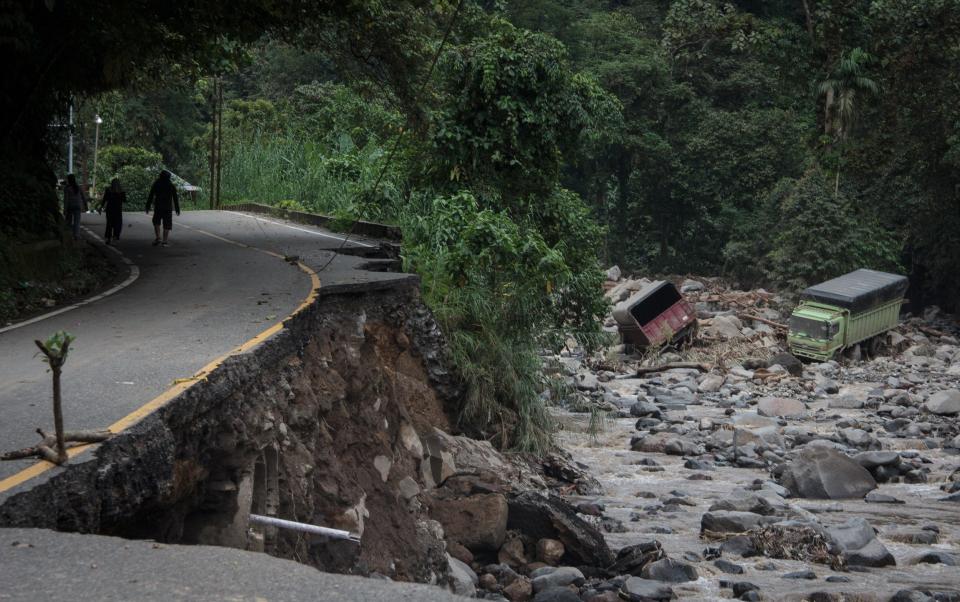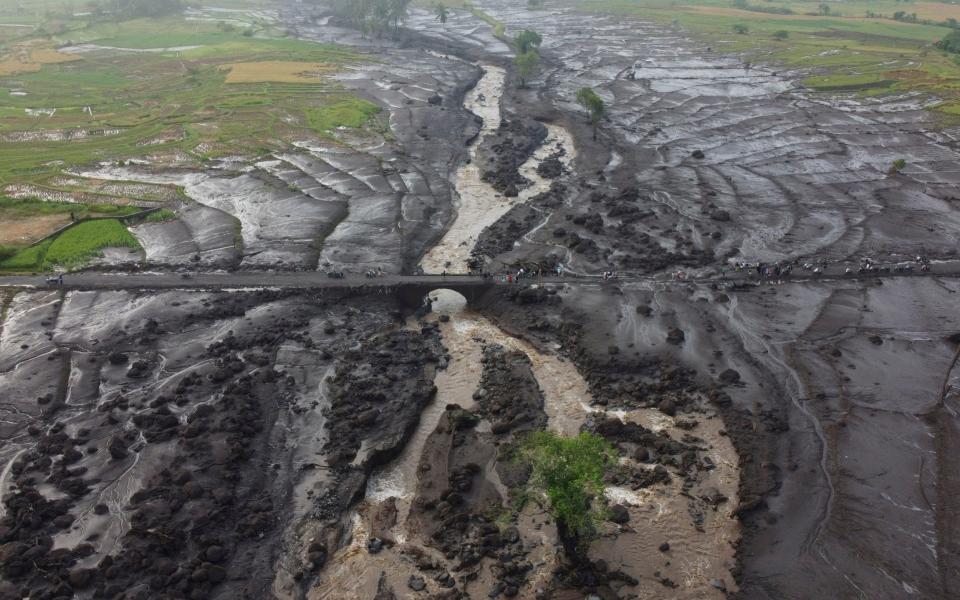Dozens killed in cold lava landslides in Indonesia

Dozens of people have been killed in Indonesia after heavy rains triggered landslides and sent “cold lava” flowing down the side of a volcano.
A downpour on Saturday caused large boulders to tumble down the slopes of Mount Marapi, one of the country’s most-active volcanoes, while floodwaters inundated homes in two districts of Sumatra.
The death toll from the flash flooding has risen to 41, disaster relief officials said. At least 17 other people are still missing.
“Data as of last night, we recorded 37 dead victims... But from this morning it has grown again, the figure reached 41 [dead],” Ilham Wahab, a West Sumatra disaster mitigation agency official, told AFP.
What is cold lava?
Cold lava flow is a mud-like mixture of volcanic ash, rock debris and water that flows down a volcano’s slopes in the rain. It is also known in Indonesia as a lahar.
Rescuers were still searching for 17 missing people in two districts – Agam and Tanah Datar – that were the worst hit by the floods and home to hundreds of thousands of people.

Residents said they heard rocks thundering down roads outside their homes when the heavy rains struck.
“My house was vibrating,” said Budi Rahmat, a 44-year-old farmer in Agam.
“I heard the thunder and the sound similar to boiling water. It was the sound of big rocks falling,” housewife Rina Devina told AFP, adding that three of her neighbours were killed.
“It was pitch black, so I used my cellphone as a flashlight. The road was muddy, so I chanted ‘God, have mercy!’ over and over again,” she said of her evacuation to a local official’s office.
Dwikorita Karnawati, head of Indonesia’s meteorology, climatology and geophysics Agency (BMKG), told reporters on Monday that West Sumatra was a “unique location” because in parts of the province, rain could fall almost all year round. “So the potential for flood and landslide are always present,” she said.


Mount Ibu sends ash three miles into the sky
Separately, Indonesia’s Mount Ibu volcano erupted on Monday morning, firing thick plumes of grey ash more than three miles into the sky, the southeast Asian nation’s volcanology agency reported.
The volcano on the remote island of Halmahera, located some 1,550 miles east of the Indonesian capital Jakarta, erupted at 9.12am for about five minutes.
No damage or casualties have been reported so far but all activities within a three-mile radius of the volcano have been prohibited and the alert status raised to the second-highest level of a four-tier system.
The grey-black ash column was observed with “thick intensity, leaning towards the west,” Geology Agency head Muhammad Wafid said in a statement.
Residents on the island have not been evacuated but Hendra Gunawan, head of Indonesia’s Volcanology and Geological Hazard Mitigation Centre, warned that: “If it starts to rain ash, we recommend people who are near the volcano to wear a mask and glasses.”
Exposure to volcanic ash – which is pulverised rock and can sometimes be gritty or contain corrosive particles – can cause irritation to the eyes as well as the respiratory system.
The volcano also erupted on Saturday on a smaller scale, spewing lava and ash and causing a dramatic display of lightning.
As many as 58 eruptions a day
Halmahera island has the largest density of active volcanoes of any region in Indonesia, among them Mount Ibu, which can be visited by tourists during calmer periods of seismic activity.
In 2023, a total of 21,100 eruptions – an average of 58 eruptions per day – were recorded from the volcano, making it one of the most active in Indonesia.
Indonesia, which sits on the so-called Pacific “Ring of Fire”, experiences frequent earthquakes and volcanic activity.
Last month, Mount Ruang in North Sulawesi province erupted more than half a dozen times, forcing thousands of residents of nearby islands to evacuate and closing a nearby international airport. It remains at the highest alert level.
All of the 800 or so residents of Ruang island will be permanently relocated.

